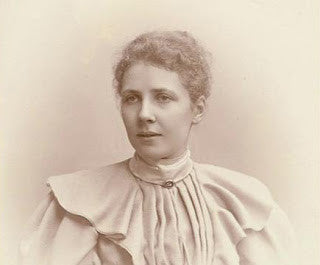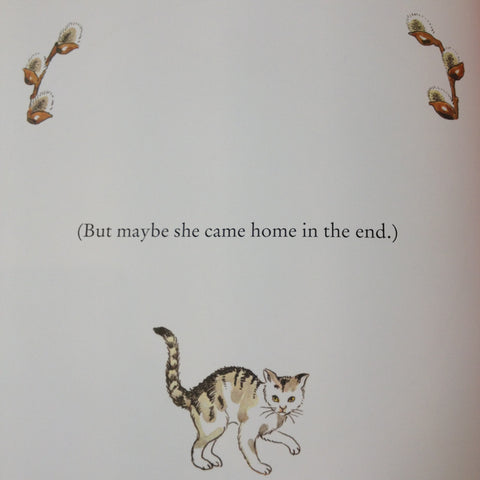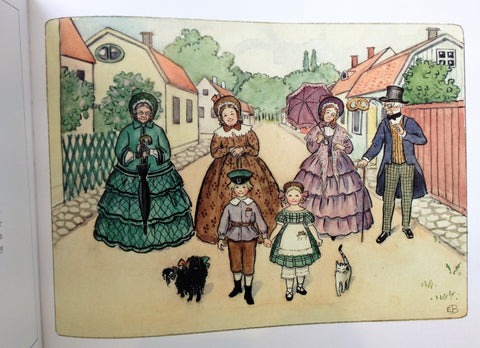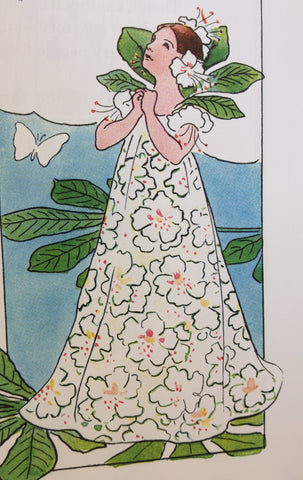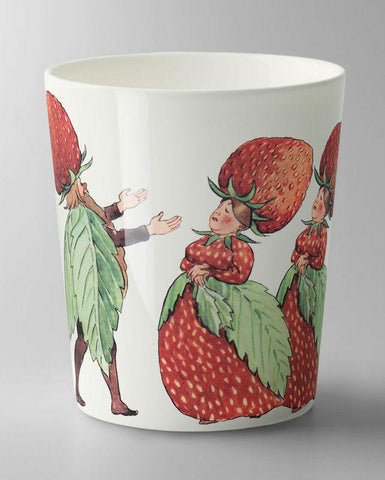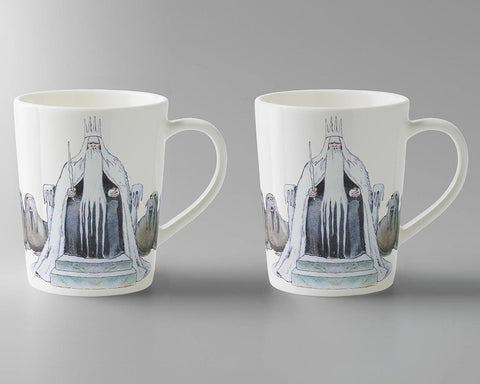Illustrator of the Month: Elsa Beskow
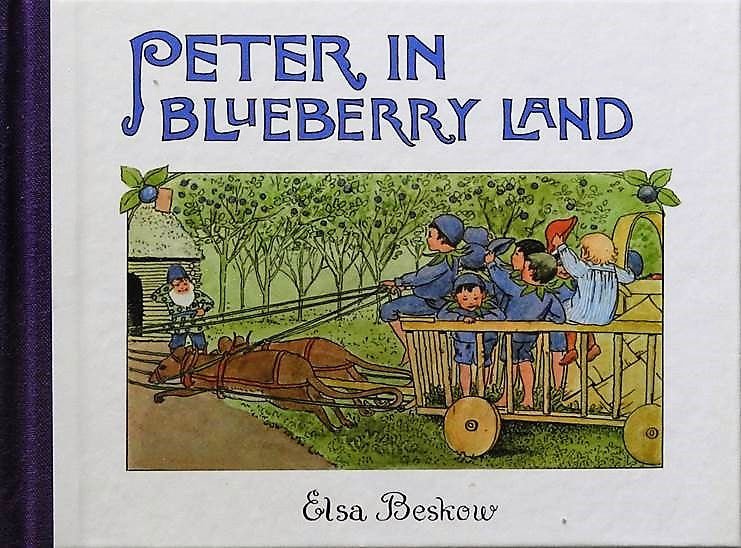
Our ‘Illustrator of the Month’ blog series focuses on some of our favourite illustrators, their lives and their works. This is a chance to learn more about the people who illustrated your favourite books, the influences that shaped their art style and storytelling, and some of their lesser known projects.
So far, we’ve written on the modern-masterpiece-maker Jon Klassen, and the cult illustrator Tomi Ungerer. Now it’s time to hark back to the old classics, with the timeless Elsa Beskow!
Elsa Beskow was a Swedish children’s writer and illustrator who published dozens of books during the early 20th century. She is often referred to as “the Beatrix Potter of Scandinavia”, and children in that part of the world have been growing up with her stories for over a hundred years. She was a very prolific worker, and her stories reflect her interest in nature and the freedom of childhood.
Early life
Elsa Beskow was born Elsa Martmaan in Stockholm, Sweden in 1874, the second of six children. As a small child she was already a natural born storyteller, and her older brother Hans would help fill in the words when her imagination was bigger than her vocabulary! She grew up surrounded by fairy tales and nursery rhymes, and would later create her first picture book The Tale of the Little, Little Old Woman from a nursery rhyme her grandmother taught her. When this book was originally released, the publisher convinced her to add in an ending with the Old Woman's cat running to the woods and never coming back, because this was the way he remembered the rhyme from his own childhood. But years later she added an extra page to say that maybe she came home in the end, so that children wouldn’t be sad!
When Beskow was 15, her father died, leaving her mother penniless, and the family moved in with her unmarried aunts and uncle who were already living together. This living arrangement later inspired the Aunts series, some of Beskow’s most popular books. The stories feature Aunt Green, Aunt Brown, Aunt Lavender and Uncle Blue, who take in the unfortunate children Peter and Lotta and educate them at home.
Escapism
Beskow began publishing the Aunts series during the First World War. The war traumatised her and recalling childhood memories to create an idyllic world was a way of escaping from reality. The generosity of the three aunts is a hallmark of these stories:
“For now and then Aunt Brown put toffee and gingerbread in their pockets, Aunt Green secretly told them they could eat all the gooseberries and pears they wanted from the garden, and Aunt Lavender kept calling them into the kitchen to taste her berry syrup.”. - Aunt Green, Aunt Brown and Aunt Lavender, 1918.
Sweden suffered food shortages during the war; bread and sugar were rationed, followed by meat, eggs, milk and butter. Women went on strike demanding food for their children, and there were even outright riots over the shortages. The bountiful world of the Aunts series was an appealing fantasy for Swedish families at this time.
Providing for the family
Elsa Martmaan met Nathaniel Beskow at art college and she became Elsa Beskow when they married in 1897. They had six sons. Although they met when they were both studying art, (Elsa was a model for Nathaniel’s paintings), Nathaniel changed direction suddenly and went back to his abandoned theology studies. This career didn’t bring in much money, so Elsa became the main provider for her growing family. She described her married life and career as “every year another book and every other year a boy”. One of her sons, Bo Beskow, (who became a successful artist in his own right, with some of his work being housed in the United Nations headquarters), looked back with amazement at his mother’s work ethic in his book Krokodilens middag:
"How did she find the time to work with her picture books! She had to produce one a year in order to support the family…We understood that father’s work was important; he was not to be disturbed, but mother only drew and painted – it was fun and we could disturb her as much as we wished. Mother was always available; she didn’t have her own work room, she wrote and drew at a large white table in the parlor. Everything and everyone in the house that moved passed by there, someone always needed her help with something."
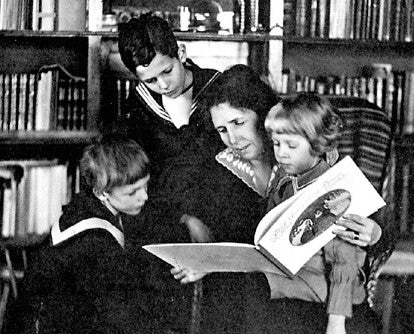
The financial pressure to provide for her family explains why Beskow was such a prolific author and illustrator, with 21 books by her in our collection alone! Her sons made their way into her books, she used them as models for her illustrations, and wrote books for each of them. She also used her garden as inspiration for the plant life in her books, and was interested in nature all her life. Working in a domestic setting didn’t limit Beskow’s imagination. In Krokodilens middag her son said his mother “could work magic. Sometimes when it was gray and cloudy, she would take a stick and stir up the clouds and say: ‘Come out sun!’ and the sun came out.”
Commercial success
Beskow’s first book was The Tale of the Little, Little Old Woman, but her first major success was her second book, Peter in Blueberry Land. It was first published in 1901 and translated into German in 1903, Danish in 1912 and English in 1931. In this book, Peter gets shrunken down to tiny size by the King of Blueberry Land, while collecting fruit in the forest for his mother. Beskow often combined her love of nature with her fairytale imagination, and in this book Peter gallops on mice with the blueberry boys to meet Mrs Cranberry and her five daughters.
Beskow’s illustration style is as gentle as her stories, with delicate watercolours and rosy-cheeked children, but as a writer she was not as conventional as she may seem to modern audiences.
Daring
The aunts and uncles who helped raise Elsa Beskow had progressive views on childhood and education, and founded a school where enjoyment and games were central, and emphasis was placed on helping children understand what they were learning, as opposed to teaching by rote. This probably influenced her stories, as they are full of children showing their initiative and striking out on adventures of their own. Even though this doesn’t always end well, (like when The Children of Hat Cottage end up accidentally burning their mother's house down when she’s away on errands!), these stories reflect Beskow’s upbringing and the belief that children should decide things for themselves to fulfil their unique potential. Beskow’s attitude to class struggles and women’s liberation can be seen in another of her popular books, The Flowers’ Festival, in which the haughty flowers dismiss the weeds as “rabble”, but the weeds refuse to be silenced.
Some critics have even suggested that Mrs. Chestnut, who wears a loose, flowing dress, is depicted as pregnant. If true, this challenged the conservative Swedish bourgeois view at the time, that pregnant women should be hidden from view.
Legacy
Like all great children’s authors, Elsa Beskow believed that childhood was special and that children’s imagination should be respected. She enjoyed creating her picture books, saying that “there is something blessed about children, they are always willing to meet you halfway”. Her work still stands up over one hundred years after it was created, and her books are now also interesting from a cultural history perspective as they detail clothing and interiors from turn of the century Scandinavia. Her illustrations are still inspiring designers to this day, recently details from her work were reworked by Catharina Kippel in a beautiful range of kitchenware from Design House Stockholm.
Beskow is considered the earliest Swedish author to have had mass popularity outside Sweden, and her work has been translated into nineteen languages. In 1958 there was a prize named after her, the Elsa Beskow Plaque, which awards excellence in Swedish picture books.
View our large range of Elsa Beskow books and accessories here.
